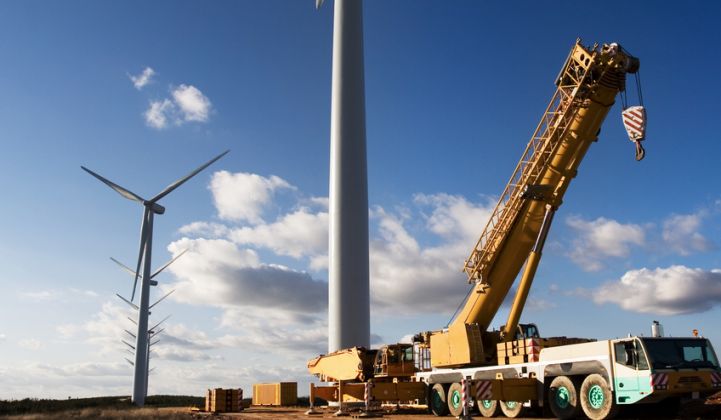The U.S. largely depends on fossil fuels to power its economy, but there are signs that the country is getting modestly cleaner.
America has separated oil consumption and electricity consumption from economic growth; energy productivity has increased 11 percent since 2007; non-hydro renewable electricity generation has increased by 4 percent since 2007; wind and solar capacity have grown 2.5 times since 2008; and although carbon dioxide emissions are up 4 percent since 2012 due to an increase in coal generation, they are down 9 percent since 2007.
Those are just a few of hundreds of statistics outlined in Bloomberg New Energy Finance's sustainable energy fact book released this week. Below is a collection of data points from the report that provide insight into how each sector fared in 2014. While the high-level numbers are positive, sectors outside wind and solar have generally struggled to get beyond incremental growth.
1. Petroleum and coal consumption have declined slightly, while renewables have seen a modest increase.

Source: BNEF
2. Over the last decade and a half, natural gas and renewables accounted for more than 90 percent of new electricity capacity.
Source: BNEF
3. Wind and solar have dominated new renewable capacity additions, while other sectors have seen incremental or no growth.
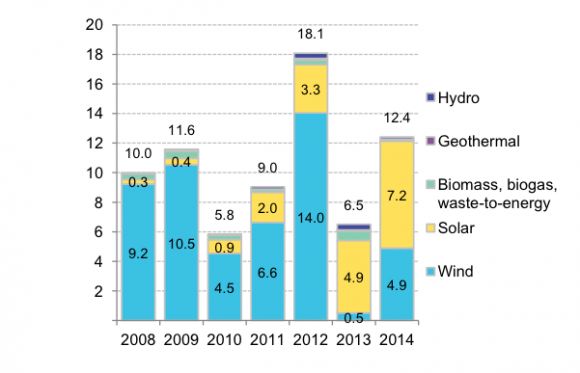
Source: BNEF
4. Even with some dips, clean energy investment in America has grown fivefold since 2004.
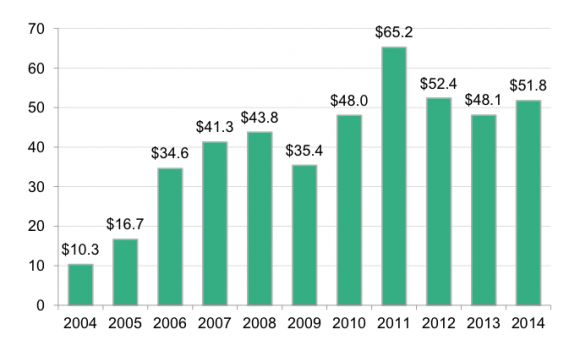
Source: BNEF
5. Tax credit extensions helped biomass power plant developers, but plant retirements are outpacing new development.
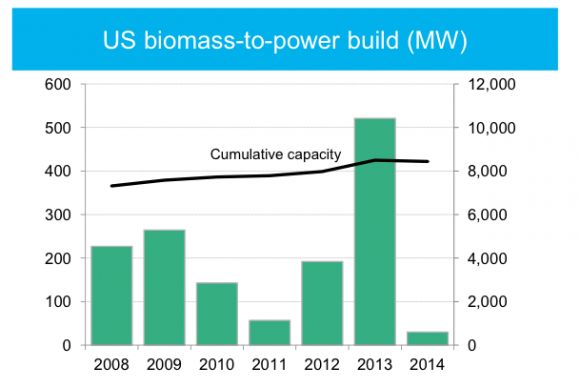
Source: BNEF
6. Long lead times and tax credit uncertainty continue to plague geothermal, which only saw two projects commissioned last year.

Source: BNEF
7. After tax credit extensions enabled a mini-boom in hydropower projects, their expiration caused a 95 percent drop in 2014.
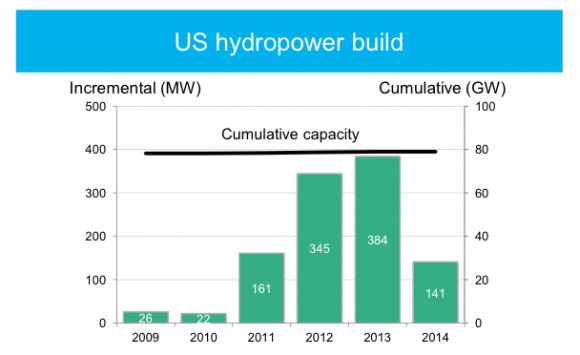
Source: BNEF
8. Although the Investment Tax Credit has opened up new financing models for small wind, the industry has struggled to compete against distributed solar.

Source: BNEF
9. A lack of standards and adequate financing options have also stalled investment in anaerobic digestion projects.
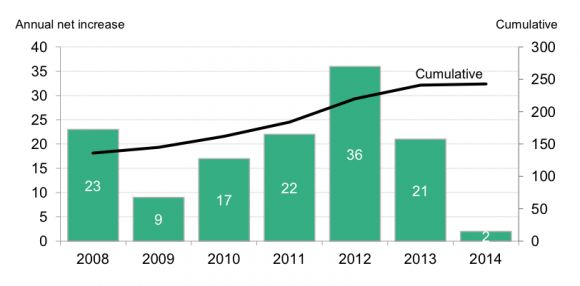
Source: BNEF
10. Stymied by standby charges, EPA regulations and franchise-rights conflicts with utilities, the combined-heat-and-power sector has seen flat growth since 2008.

Source: BNEF
11. Driven by data center demand and other commercial applications, stationary fuel cell projects continue to rise.
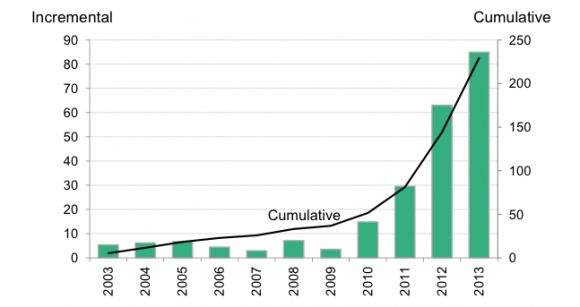
Source: BNEF
12. Pumped hydro makes up 95 percent of installed storage capacity, but the stimulus package and state targets enabled a modest surge in battery projects.
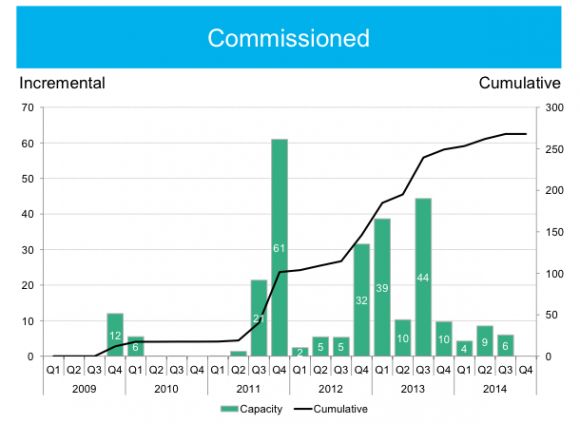
Source: BNEF
13. Energy efficiency budgets grew through 2013, but uncertainty persists in some states looking to freeze their targets.
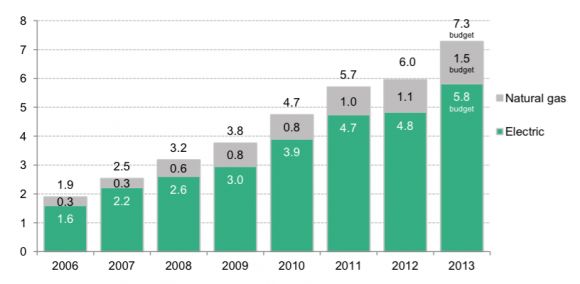
Source: BNEF
14. Natural gas drilling operations have gotten far more efficient.
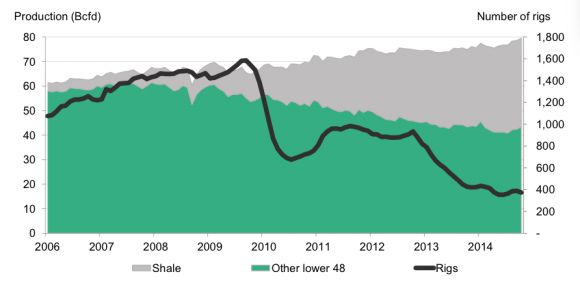
Source: BNEF
15. Electric vehicle sales were up 25 percent last year, but still represent less than 1 percent of total U.S. auto sales.
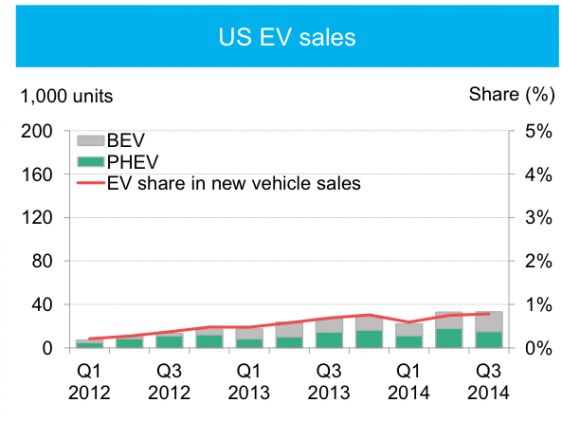
Source: BNEF
America is seeing early signs of a low-carbon transition. But when considering trends sector by sector, it's clear that the growth still isn't all that diverse -- it's largely limited to natural gas, wind and solar.
